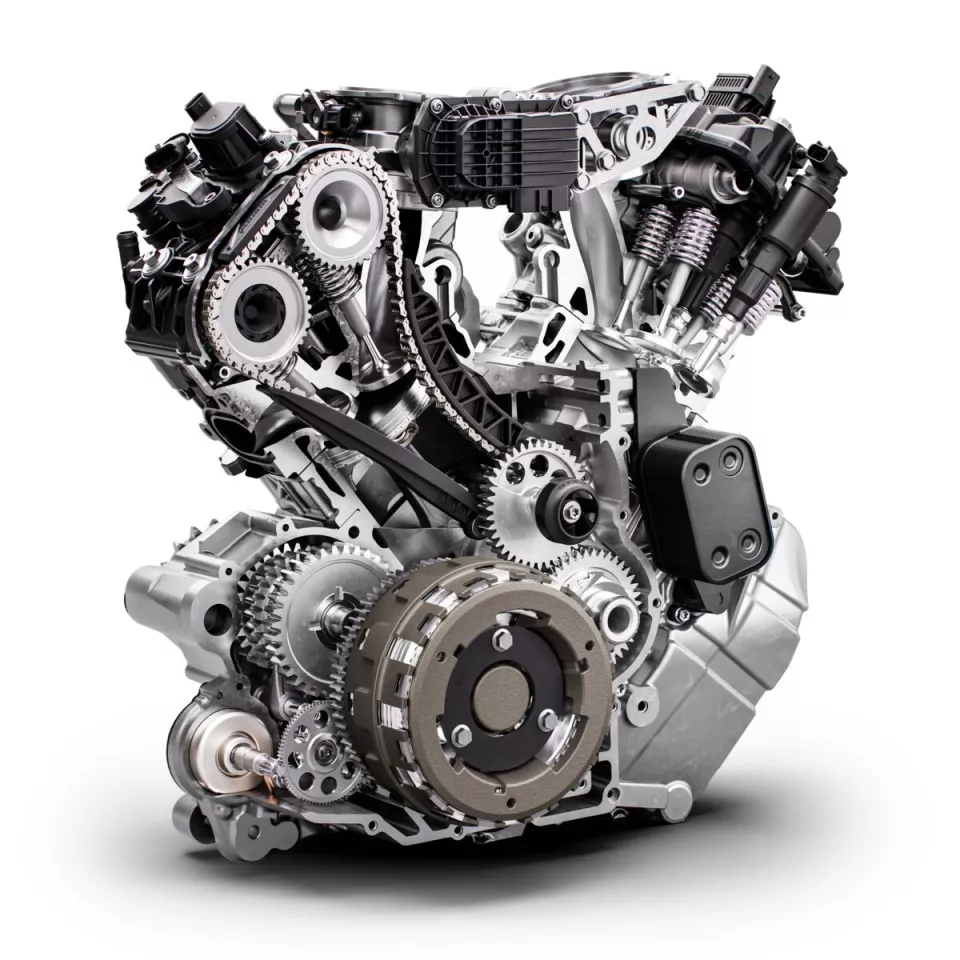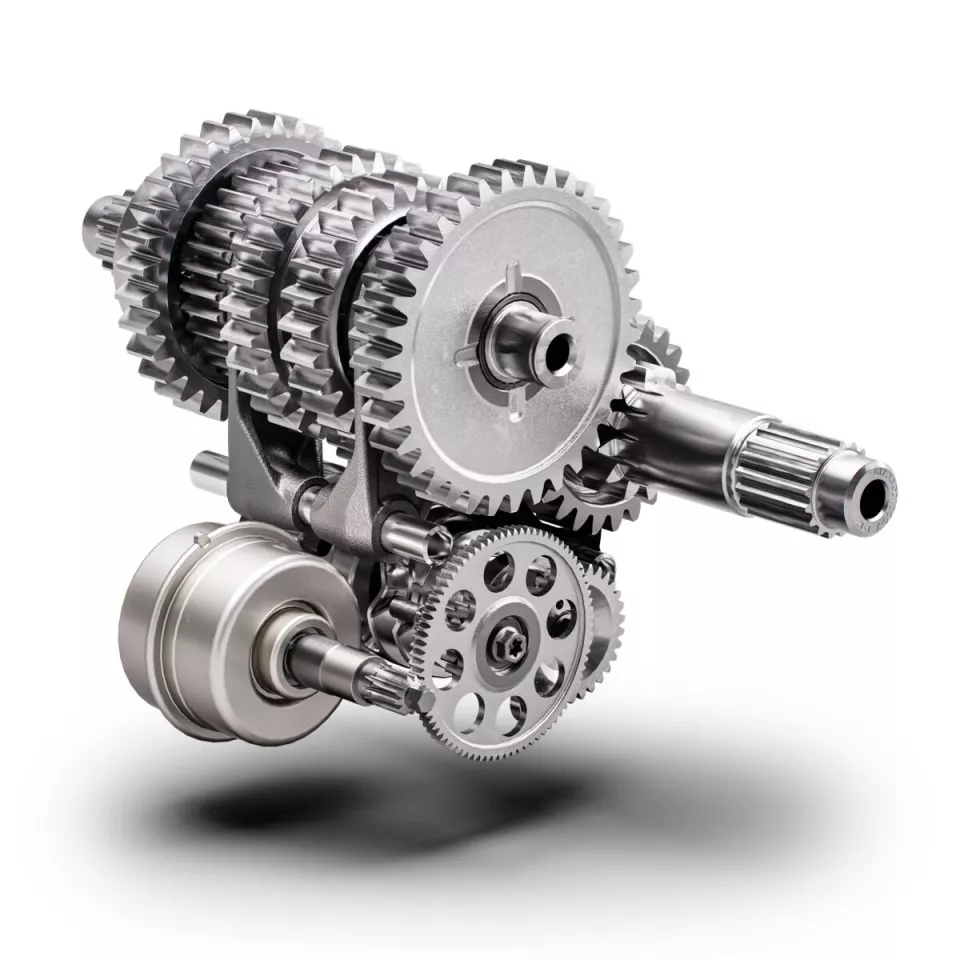KTM’s all-new Automated Manual Transmission (AMT) is rolling out on the upcoming 1390 Super Adventure tourer, and the company claims it'll change the way we ride motorcycles. It comes with a P – N – 1 – 2 – 3 – 4 – 5 – 6 gear sequence – and of course, no clutch lever.
Who would've thought we’d live to see a “Park” gear on a motorcycle? Who would've thought we'd need one? For decades, it's been 'throw the thing on the sidestand, stick it in gear if it's in any danger of rolling down a hill, job done!' Not anymore, says KTM.
BMW, Honda, and Yamaha have had various different types of automatic motorcycle on the market for many years, and KTM is the latest to follow suit. This is the first alternative gearbox system from the Austrian brand, although certainly in the dirtbike world, it's been possible to ride KTMs without using the left lever for a long time thanks to aftermarket suppliers like Rekluse.

The riding experience won't change too dramatically – KTM has retained the standard foot-shift gear lever, "manual" mode lets you use that for complete control over the gears - no clutch required.
There are some drawbacks to riding clutchless. Seasoned riders, for instance, might feel more comfortable having that precise control over drivetrain engagement. Some highly technical off-road riders and stunters might miss the left-hand lever and its ability to quickly lift the front wheel, either to get over a log, or to entertain the children.

On the other hand, KTM says the clutchless system has benefits in braking, pulling away, riding at lower speeds, and handling slopes. It'll certainly save some sore wrists for riders on bigger, heavier bikes, going slowly in heavy traffic or highly technical terrain – just twist 'n' go, like a scooter rider.
What sets KTM's AMT apart from other manufacturers is that the Austrian maker has chosen to use a centrifugal clutch in the setup – similar in that regard to the Rekluse system mentioned above. The clutch plates are pushed apart by weak springs while the engine's idling, but as soon as some throttle's applied and the engine spins up, the additional centrifugal force actuates a system to bring the friction and steel plates together, and you're away.
The spring force is precisely tuned to ensure the bike is highly responsive in low-speed operation – and KTM promises there'll be no stalling with this AMT system. No matter how fast or slow the bike goes, stalling the engine should be impossible.
The shifts are controlled via the ECU and a Transmission Control Unit, supported by an electromechanical shift actuator. In manual mode, you get two options for changing gears: a paddle on your hands or the conventional foot gear lever. In the automatic mode, the bike controls the shifting based on the user’s ride style and speed – but any shift input through the foot lever or paddles will override the auto shift for four seconds before handing control back to the ECU.

KTM says the AMT system can change gears in 50 milliseconds depending on an array of variables, including the rider's inputs, bike speed, acceleration, lean angle, and actual gear position. There are three shift modes as well, namely Comfort, Street, and Sport. This would enable the riders to adjust the gear changes to suit their riding style and riding conditions. You will also be able to shift gears closer to the redline if you're really flogging the bike, thanks to the AMT's switchable High Rev limiter shifting option.
As opposed to a conventional gear sequence (1 – N – 2 – 3 – 4 – 5 – 6) on a motorcycle, KTM's AMT is like that of a car (P – N – 1 – 2 – 3 – 4 – 5 – 6). But why the “P”, you ask? That’s because the centrifugal clutch remains disengaged with the engine stopped, so you do need some other way to lock the rear wheel. Thus, the “Park” mode is extremely useful to keep the bike steady when parked on a slope.
Regardless of whether the engine is running or not, Park and Neutral can only be engaged via the shifting paddle on the handlebar. As for the first gear, either the front or rear brake must be applied to engage it. The forward drive will engage as soon as the engine gets going by engaging the first gear. Concurrently, the centrifugal clutch will engage, permitting the motorcycle to move forward.

One feature that stands out is that when Adaptive Cruise Control (ACC) is engaged, the AMT system will cause the bike to slow down to a stop if the vehicle in front of it stops. The bike will then automatically begin to accelerate if the halt lasts less than three seconds. If the halt duration is more than 3 seconds, you'll have to accelerate manually or press the cruise control's resume option. Full stop/start radar cruise on a motorcycle... Pretty bloody nifty, ain't it?
“This isn’t your grandad’s auto transmission," says KTM, of this fully automatic 6-speed auto with the option of a clutchless manual. Mind you, the likes of Yamaha and Honda could make the same claim of their their Y-AMT and E-Clutch respectively. So we’re not 100% sure this ISN'T my grandad's auto transmission.

Our friends over at MCNews were one of the lucky few to test-ride the KTM tech on some yet-to-be-revealed KTM models. They had only positive things to say about the AMT. Most importantly, the automatic shifts took about the same time as a conventional modern quick-shift set-up per MCNews. Another positive is that the AMT system only adds a kilogram or two to the bike’s overall weight. So no foreseeable impact on ride dynamics as well.
All of this sounds sweet in an age when most tech around us is getting automated. It’s all fun and games when you want to sit back, relax and let the bike do all the work.
But honestly, is that why we ride motorcycles? In the car world, automatics are practical and simple for the majority of commuting drivers, but enthusiasts often prefer the extra control and involvement of a clutch and a stick-shift. Motorcycles are hard to ride well – the kinesthetics of a complex control system are part of the physical dance between rider and machine that makes these things so endlessly absorbing to ride.
Perhaps it makes us sound like ancient curmudgeons to say it, but wasn't there already a place for automatics in the two-wheeled world? And wasn't that in the scooter-commuter market, about as far away as possible from the wild machines KTM is known for? Ah well, thus far, we've seen very little out of Austria that hasn't been a ton of fun to ride, so I guess we'll wait and see how these things go.
Source: KTM









